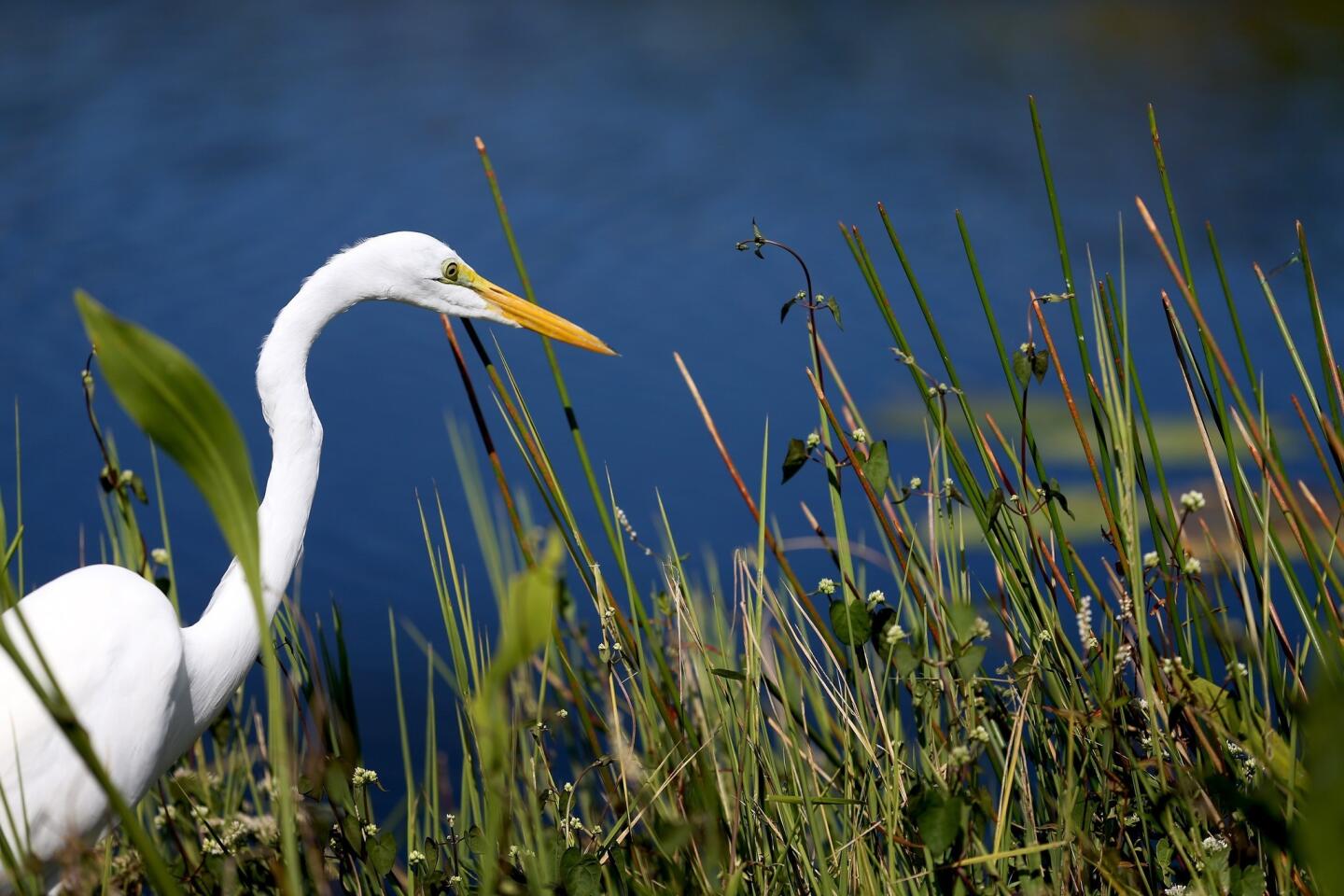Florida’s Everglades National Park an ecosystem in distress
- Share via
The first time I waded thigh-deep in the waters of the magical Everglades in south Florida, it seemed like nature’s resting place, with an air of prehistoric tranquillity. Everything was still and heavy with humidity and unlike anywhere else I’d been. And yet even here in the U.S., Everglades National Park is on UNESCO’s List of World Heritage in Danger.
The park is home to endangered plants and animals, including the manatee and panther. Yet humankind has drained, encroached, introduced nonnative species and developed the margins of the Everglades so that the entire area is half the size it was a century ago. Only a fifth of the Everglades ecosystem is protected by the national park, but even this land cannot be shielded from the effects of what happens around it.
For 60 years, the sugar industry has thrived on the borders of the park, siphoning off water. The fertilizer runoff and pollution from sugar cane and other agricultural operations have degraded the water quality, altering the ecosystem’s plant and wildlife within and outside the park. The enormous housing growth and subsequent population boom in southern Florida have also placed huge demands on water supplies.
Everglades National Park is a prime example of the law of unintended consequences. Introduced species are a problem throughout the region, the most diabolical of which is the Burmese python. Owners often secret them into the park where they are released without a thought to their impact. They thrive — the park service website says more than 2,000 have been removed in the last dozen years, and park officials believe there could be more than 100,000 voraciously eating wildlife.
If more animal habitat is affected in the name of human progress, the world stands to lose the 70 to 100 Florida panthers left in the park; the green sea turtles that nest in its estuaries; the manatees that swim inland for warm water; and the wading birds that have lived here for millenniums and are now on the endangered species list.
Although the U.S. government has allocated funds to restore the Everglades park, including buying up surrounding sugar cane fields, improvement has been glacial. It’s unlikely the Everglades will disappear entirely, but it is worth a trip to see the park now before the landscape is changed forever. “The wilderness,” Clyde Butcher, a photographer and Everglades environmentalist, once said, “is a spiritual necessity.”
Info: Everglades National Park, https://www.nps.gov/ever/index.htm; whc.unesco.org/en/list/76
More to Read
Sign up for The Wild
We’ll help you find the best places to hike, bike and run, as well as the perfect silent spots for meditation and yoga.
You may occasionally receive promotional content from the Los Angeles Times.









